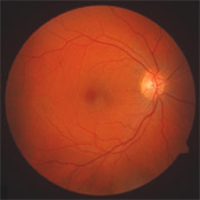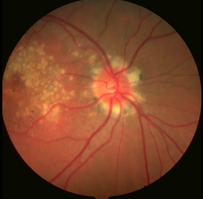Eye Diseases
We identified by positional cloning and candidate gene approaches eight genes (CABP4, CACNA2D4, GRM6, NDP, NYX, RP2, RPGR, and SLC16A12) that are mutated in familial and sporadic forms of human eye diseases (cataract, Wagner disease, cone dystrophy, retinitis pigmentosa, night blindness, and Norrie disease). For some of them, the precise role of the corresponding gene product(s) in retinal tissue is poorly characterized. It is our goal to understand the molecular pathophysiology of these diseases as a prerequisite to develop novel therapeutic interventions.

The group of retinal and vitreoretinal diseases (cone dystrophies, exudative vitreoretinopathies, macular degenerations, night blindness, retinitis pigmentosa) is particularly heterogeneous. Mutations in more than 250 genes can give rise to about 20 different retinal and vitreoretinal phenotypes. For more details please refer to:
Berger W, Kloeckener-Gruissem B, Neidhardt J (2010) The molecular basis of human retinal and vitreoretinal diseases. Prog Retin Eye Res 29:335-375
Disease classification overview.
TEAM MEMBERS
Wolfgang Berger (PhD)
Silke Feil
David Grubich Atac (MD/PhD)
Samuel Koller (PhD)
Jordi Maggi (PhD)
Kevin Maggi

